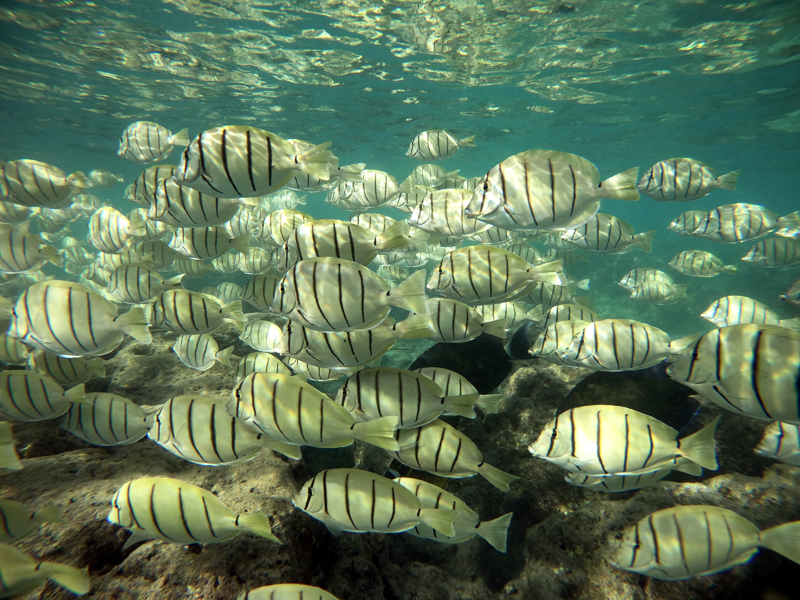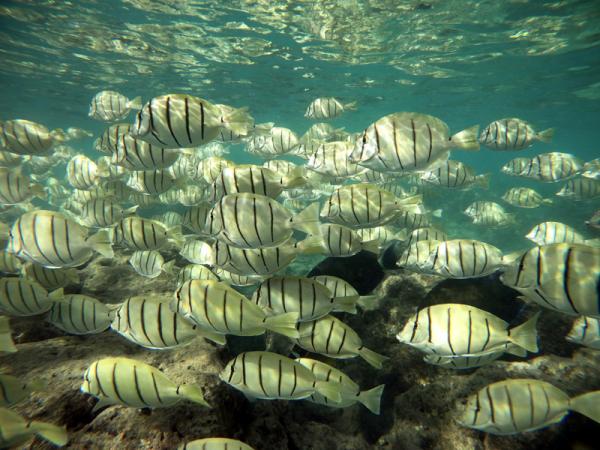KID REPORTERS’ NOTEBOOK
Marine Life in Hawaii Get a Break During the Pandemic


A school of manini (convict tang), which are small sturgeonfish, swim in Hawaii’s Hanauma Bay.
Hanauma Bay is located along the southeastern coast of the Hawaiian island of Oahu. Several years ago, the popular tourist destination was established as a nature preserve in order to protect local marine life. Overuse among snorkelers and other visitors had been causing serious harm to the ecosystem.
Due to the coronavirus pandemic, Hanauma Bay was closed to the public on March 18, 2020. Before the pandemic, an average of 3,000 people visited the bay daily. On December 2, 2020, Hanauma Bay reopened, with a limit of 720 visitors per day, and only 120 per hour.
Researchers from the Hawai’i Institute of Marine Biology Coral Reef Ecology Lab have been studying the bay during this time. “We’re looking at how many people can go in and out of the bay per day without damaging the resources there,” said Sarah Severino, a research assistant. “One recent way we’ve started collecting data is through video.”
Severino and other researchers are looking to see how many times fish are taking bites of algae and whether there is a difference when people are around. “Herbivores are fish that graze on algae or limu [seaweed],” Severino said. “They eat all the algae on the reef so that it’s not competing with the corals.” Algae robs corals of the light and space they need to grow.
There are dozens of species of butterfly fish in Hawaii, including the kikakapu, which means “strongly forbidden.”
THE IMPORTANCE OF CORAL REEFS
Anecdotally, researchers have spotted bigger fish coming into Hanauma Bay during the pandemic. “We have also seen an expansion of ranges of fish,” Severino said.
Water clarity has also improved during the closure. “Water clarity is important because corals use the sunlight to create their own food,” Severino explained. “It’s likely that some of the improvements in water quality are due to having less people walking around kicking up sediment.”
Researchers do not know yet if Hanauma’s Bay closure has helped the corals. They calculated the corals’ growth rate during the closure, and will do the same now that the bay has reopened.
“A lot of people think that the best thing to do for Hanauma Bay is to keep people out,” Severino said, “but I don’t know if that’s the best thing.” She believes that a certain number of visitors can be sustainable without harming marine life.
Visitors learn valuable lessons while interacting with nature. “What Hanauma Bay brings to people is a level of education they can’t get anywhere else,” Severino said.
For one thing, visiting Hanauma Bay helps people learn about the importance of coral ecosystems, which are suffering globally, and how to protect coral reefs. “That’s why Hanauma Bay is so important,” Severino added, “for coral health around the state.”
Hanauma Bay once accommodated more than three million visitors per year.
